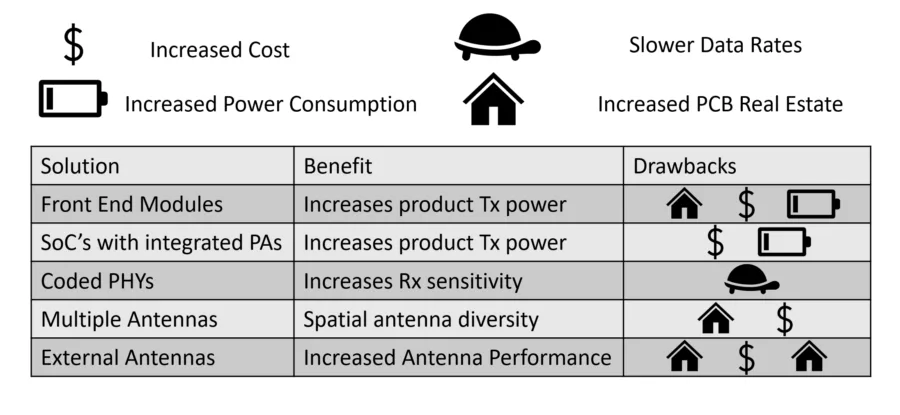Product level symptoms – why is my wireless unwell?

Modern wearables have now applications in a wide range of areas, such as in wireless audio, lifestyle & sports, healthcare, etc. A range of wireless technologies operating at various frequencies can be used in wearable systems, but by far the most common technology used in modern wearable devices is Bluetooth, alongside other wireless technologies operating the 2.4 GHz Industrial, Scientific and Medical (ISM) frequency band such as ANT+ and Wi-Fi.
However, as the popularity of wearable devices with wireless functionality continues to grow, so too does the demand for ever smaller devices, higher data rates, longer communication ranges, lower latency and higher reliability.
Current IoT type applications are increasingly utilising real-time wireless continuous communications in their systems, with delays or dropouts in the link potentially significantly deteriorating user experience in an area where users demand perfection. The best wireless link you can hope for is one which the user doesn’t even know is there and nothing kills brand trust like a dodgy wireless link. These IoT devices are usually battery operated (sometimes with low capacity, low peak current coin cells), further complicating things.
Therefore, wearable device design is extremely challenging under normal conditions but there are a few scenarios where good quality communication links are even more challenging or even impossible using current standard wireless systems:
- At long(er) ranges – A pretty obvious scenario but the maximum range of a wearable communication link will change from device to device depending on how well the wireless system was designed. At longer ranges, your wireless system may not function as desired, with dropped packets causing problems.
- Outdoors – Surprisingly, outdoors can be extremely challenging for wireless wearables. The objects, walls, etc found indoors which you may expect to obstruct communications, will in fact most of the time help to support your communication link in Non-Line-of-Sight (NLOS) scenarios through multipath propagation. In an outdoor scenario with NLOS and little multipath, wearable wireless communication links will drop packets, even at surprisingly close distances.
- Noisy RF environments – The main reason why we use the 2.4 GHz ISM band in the first place can also cause a lot of problems. Worldwide, license-free access in this frequency band has pushed the vast majority of consumer wireless products to have some sort of 2.4 GHz functionality, but in use cases where many people are present (such as at concerts, sporting events, etc.), receiver sensitivity can get drowned out by the sheer number of devices operating across all channels in the band. This means devices which would normally operate well under standard conditions will struggle with dropped packets and reduced communication ranges in these noisy RF environments.
- User Movement – To further complicate things, wearables are mounted upon unpredictable, dynamic, moving platforms (or people). To the dismay of the device designers, users may place these devices in the most RF unfriendly locations on the body, smothered or obstructed by other body parts, backpacks, seats, etc. Also, a wearer moving rapidly and changing direction, such as an athlete on a sports pitch, may rapidly cause NLOS and LOS communication link scenarios, causing packets to be dropped due to body shadowing in the NLOS scenario. These collectively will cause unpredictable communication links.
Wearable device designers are well aware of these challenges and have come up with a number of solutions to try and overcome the problems above. However, as with everything in engineering, there are drawbacks, and these solutions and drawbacks are shown below:

Product Level Symptoms
To solve the many challenges of wearable wireless communications there are many options available to device designers but there are drawbacks associated with nearly all options. However, there is one component in a wireless system which, if designed and used correctly, will undoubtedly boost the wireless performance of that device more than any other option:
THE ANTENNA
A single, internal antenna, if designed correctly, will improve the wireless performance like no other option. Or alternatively, a single well designed antenna can be used in conjunction with the options listed above to push the wireless performance of the device even more.
However, the human body is not a friendly EM environment to antennas and there are many specific challenges in wearable antenna design that must first be overcome. This series of blogs will explain these challenges and how to overcome them.





